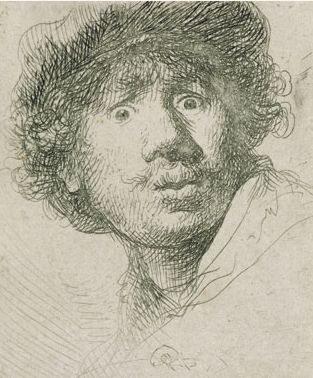Sketching in general entails 4 distinct steps: line, tone, texture, and shape. In the special case of pencil portrait drawing we can refine the list of steps to six: shape, proportion, anatomy, texture, tone, and planes.
Sketching in general entails 4 distinct steps: line, tone, texture, and shape. In the special case of pencil portrait drawing we can refine the list of steps to six: shape, proportion, anatomy, texture, tone, and planes.
In this article we will give a detailed description of each of those pencil portrait drawing steps.
(1) Form Shape or Shape – The illusion of three-dimensionality in sketching and art in general has been central to Western art for centuries. The carving out of shape using line, structure, and tone was vital to almost all Renaissance art.
On the other hand, oriental and much contemporary art stress flatness of shape although this era in contemporary art is drawing to a close.
All shape in sketching can be reduced to 4 basic 3-dimensional solids: bricks, cones, cylinders, and spheres. The correct use of these shapes together with perspective and tone leads to the illusion of 3-dimensionality even though the drawing is, in reality, located on a two-dimensional sheet of sketching paper.
In portrait sketching, the arabesque of the skull, the square structure of the skull, and all elements within the skull (nose, eyes, etc.) are all two- and 3-dimensional shapes that contribute to the overall illusion of 3-dimensionality
(2) Proportion – encompasses all sizing and placements of shape. Proportion refers to the concept of relative length and angle size.
Proportion gives answers to these two questions:
1. Given a defined unit of length, how many units is a particular length?
2. How large is this particular angle?
Answering these 2 questions consistently accurately will yield a drawing with the right proportions and placements of all shapes.
(3) Anatomy – refers essentially to the underlying structures of bone and muscle of the skull.
It is essential to study as much as you can about anatomy. There are a lot of studies available on anatomy for artists. For a portrait artist it is particularly significant to understand the anatomy of the skull, neck, and shoulders.
Anatomy studies unfortunately include many Latin terms which makes it somewhat complicated to grasp. The idea is to study slowly and a little bit at a time because it can be quite frustrating.
 (4) Texture – in portrait sketching expresses the degree of roughness or smoothness of the shapes. The texture of a concrete walk way, for instance, is quite different from that of a cloud.
(4) Texture – in portrait sketching expresses the degree of roughness or smoothness of the shapes. The texture of a concrete walk way, for instance, is quite different from that of a cloud.
There are quite a few techniques and tricks to assist you with the creation of the correct textures. Creating textures gives you the chance to be very creative and to use each possible type of mark you can make with a pencil. In portrait sketching textures occur in spots such as hair, clothing, and skin.
(5) Tone – refers to the degrees in light or dark of the pencil marks and cross-hatchings. Powerful portrait sketches employ the full range of contrasting lights and darks. Beginning artists many times fail to achieve this full “stretch” of tone, resulting in retiring, washed-out drawings.
(6) Planes – create the sculptural sensibility of a portrait. The skull has many planes each with a unique direction and therefore with a different tone.
The idea is to think of the surface of the skull as a collection of distinct planes with a certain direction relative to the light source. You should try to identify each of the planes and draw its correct form and tone.
The correct handling of planes contributes a lot to the likeness of your model as well as the illusion of 3-dimensionality.
(Originally posted Jan 2, 2021)
Do you want to learn the secrets of pencil portrait drawing? Download my brand new free pencil portrait drawing course here: portrait drawing tutorial.
Remi Engels is a pencil portrait artist and oil painter and expert drawing teacher. See his work at pencil portraits by Remi.
P.S. For the fancy art of the 21st century and video games – visit buy PlayStation 3 info blog.
[ad#reviewpost]
~ / ~

